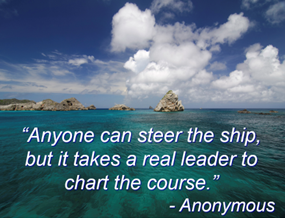Leadership Vision: How to See What Others Can’t
Every meaningful accomplishment begins as a picture in someone’s mind.
Before it becomes a plan or an action, it starts as leadership vision — an image of what could be, long before it exists.
True leaders don’t just see the present; they see through it.
They imagine a better version of reality and then rally others toward it.

Vision is not a job title.
It’s a discipline — the daily habit of imagining a better tomorrow and believing you can build it.
Seeing the Future Before It Arrives
Every meaningful accomplishment begins as a picture in someone’s mind.
Before it becomes a plan, before it becomes action, it starts as vision — an image of what could be, long before it exists.
Leaders don’t just see the present; they see through it.
They imagine a better version of reality and then rally others toward it.
Vision is not a job title.
It’s a discipline — the daily habit of imagining a better tomorrow and believing you can build it.
The Ice Cream Test (A Vision Exercise)
Imagine you’ve just won the lottery and opened your dream ice cream shop.
Where is it?
What’s it called?
What does it look like?
What does it smell like?
Who walks through the door?
How many flavors do you serve?
That exercise isn’t about ice cream — it’s about detail.
The clearer your mental picture, the stronger your belief becomes.
And belief fuels action.
When you can see your vision vividly — colors, shapes, people, textures — your nervous system begins to act as if it’s already true.
Your subconscious starts programming you toward the goal.

The Mind-Body Connection of Vision
Your brain doesn’t distinguish between imagination and experience.
What you consistently think about, you move toward.
“You are, and you will become, what you think about.” — Earl Nightingale
This is why great leaders are deliberate about what they allow into their thoughts.
They understand the sequence:
“Watch your thoughts, for they become words.
Watch your words, for they become actions.
Watch your actions, for they become habits.
Watch your habits, for they become character.
Watch your character, for it becomes your destiny.” — Attributed to Lao Tzu / James Dean
Turning Vision into Influence
Leaders don’t keep vision to themselves — they share it.
When you communicate your vision, you’re not just inspiring others; you’re also holding yourself accountable to action.
Vision gives direction.
Influence gives momentum.
Together, they create movement.
The best leaders use vision to unite people around a shared picture of what’s possible — one that makes the future feel tangible and worth working for.

Roy O. Disney, dedicating his brother’s dream — a reminder that vision isn’t just seen, it’s shared.
Overcoming the Fear of Ideas
Sometimes vision feels risky.
When you imagine something new, you also imagine the possibility of failure — of being misunderstood, criticized, or ignored.
That’s why many people stay safe. They fear their own ideas.
“Fear of ideas makes us impotent and ineffective.” — William O. Douglas
Leaders can’t afford that fear.
They must protect their imagination — because vision is their most valuable resource.
When others hesitate, leaders look forward.
Final Thoughts: Charting the Course
Vision is more than what you see — it’s what you believe before anyone else does.
It’s the courage to imagine something better, and the discipline to stay focused when it’s easier to drift.
Your vision will challenge you.
It will test your patience and your faith.
But if you nurture it daily — through clarity, imagination, and action — it will also become your greatest compass.
Related Lessons in the Red Tree Leadership Series
Action: Turning Vision into Results That Matter (coming soon)
Accountability: The Hardest Part of Leadership (coming soon)
Explore more stories and lessons at Red Tree Leadership.
Additional Resources
Frequently Asked Leadership Vision Questions
Q: What is leadership vision?
A: Leadership vision is the ability to imagine a better future and motivate others to help create it through clarity, communication, and belief.
Q: How do I build my leadership vision?
A: Set aside downtime to imagine your future vividly. Picture it in color, detail, and emotion — then act daily in alignment with that image.
Q: Why is vision important in leadership?
A: Vision provides direction and purpose. It turns goals into stories people can believe in and follow.






